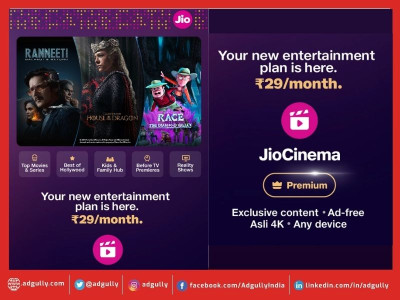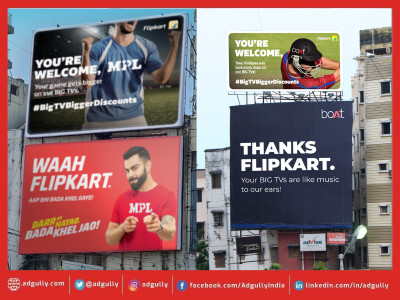Flipkart launches Hindi interface as e-comm players eye major share of Bharat
A large number of websites in India cater to the top 10 per cent of the total 74 per cent literate audiences in the country. A large section of the netizens finds it difficult to surf the internet as they are not comfortable with the English language. This has often happened with me, as the help at my home on several occasions has asked me to order items for her from these platforms as she is not comfortable with the English language used on these platforms. While these people are definitely aware of the services that e-commerce the platforms provide, they find it out of their reach as language acts as a barrier.
These are generic issues that should have been addressed years ago as e-commerce has been prevalent in the country for a long time now. However, the platforms are now trying to address the issue. Amazon has already kickstarted its Hindi offering, and yesterday, Flipkart announced the launch of their Hindi interface for users who are more comfortable surfing the Internet in their native language. Flipkart is now looking to make its platform more engaging and interactive for the estimated 200 million users in the Tier 2 and 3 markets.
The platform claims to have carried out intensive research, which included several hours of field work and interacting with the users, which brought them to the conclusion that launching a Hindi interface can really be a boon for them. It will make online shopping a seamless experience for the users as they will understand the information better and will definitely reduce guess work.
In a statement, Jeyandran Venugopal, Senior Vice-President, Consumer Experience and Platform at Flipkart, said, “The ‘Hindi’ capability becomes essential for customers to experience the comfort and convenience of shopping in their native language. We took a holistic approach of understanding consumers, their context and their needs to determine how native language can be made available in Flipkart, which will improve their understanding of e-commerce, reduce guess work and make online shopping more engaging. This will also allow the transition of online shopping in English from being a functional experience to elevating it into an emotional experience with the Hindi capability.”
This is definitely a strategic move by the platform and they are looking to double their sales during this festive season. With the “Big Billion Day Festival” around the corner, this interface shift is expected to add more customers onto the platform. With over 100 million downloads, the platform definitely seeks to take its user base to the next level.
However, it is difficult to say whether the platform is ahead of the curve with this decision, because they have always had the Hindi speaking audiences coming on to their platform. The brand has always made efforts to include these audiences with their advertising efforts. Their iconic ads that use “kids as adults” have shown that these TVCs represent different sectors of the Indian community, with kids representing Indian adults of different diversities, occupations and geographical locations. They have made the audiences connect with the platform over the years. Flipkart has often represented itself as a brand for Indians and has majorly focused on diversity.
So, the big question is whether the platform is late in doing this or is it because Amazon has already done this and so it turned into a mandate to follow suit.
It is difficult to understand why it took Flipkart so much time to understand this basic need of a large number of its customers, especially when it is a homegrown brand. There are many e-commerce players in India who offer Hindi language for their users. Even global websites offer translation of the web pages in different languages.
One may explain that the delay might be caused by the fact that the process of changing the interface isn’t an easy job. It’s a mammoth task. However, a brand like Flipkart, that has always claimed leadership in the genre, has enough resources at its disposal to have carried out this exercise a long time ago, unlike the smaller players who are not that well-funded.
It doesn’t involve just coding the translation, but also intense work on the website involving a separate team just dedicated to this shift. Chandan Bagwe, Founder and Managing Director, C Com Digital, points out that the process of the interface change is an intensive process. “Even though the core infrastructure remains the same, this doesn’t involve translation alone, but complete localisation of the content. Simple translation will not bring out the true flavour of the language. The essence of the language will be lost like this,” Bagwe adds. He asserts that the move will not only benefit the platform and its users in the Tier 2 and 3 cities, but also benefit sellers in these cities who are more comfortable with their native language.
Bagwe is right in mentioning about the essence. In the past, we have seen that when brands try to translate the ad copies, the core thought goes for a toss. One needs to focus on the local flavour to keep the core thought alive.
Vernacular is the next big thing for online, because the audiences are preferring to surf the platforms in the language that they are comfortable with. Industry studies say that 90 per cent of the Internet users in India are more fluent in Hindi. Native languages allow the user to make choices easily and with more confidence. After keeping the user’s demands in mind, Flipkart will now finally show all its information in Hindi too and will also allow the user to search the for a product in Hindi. In its efforts to make e-commerce more familiar and engaging for the customer, Flipkart will also make its platform available in other regional languages in the coming months.
Shiraz Khan, Founder-Director, Spicetree Design Agency, says, “This is a great move by Flipkart and it was long due. Many online platforms have been shifting to the regional space for quite some time now. This move is very essential for Flipkart as they are looking to further enhance their market amongst the regional audience. It is definitely a strategy move and I see it as a very positive move. Regional markets are where the success lies.”
Adding to this, Nikhil Pahwa, Founder & Editor at MediaNama, mentions that this is a good move by Flipkart, better late than never. “Most of the Internet growth in India has been driven by e-commerce websites. People used the Internet initially because they could shop online. This will only allow more users to come onto the platform.” He further adds, “A move like this for an e-commerce website isn’t easy. It involves a lot of localisation when it comes to descriptions, FAQS and reviews of a product.”
With this shift of interface, Flipkart has finally joined the race of localisation with Amazon and Google.
Amazon, Flipkart and Snapdeal are the few e-commerce websites to enter into the vernacular space. These are the top players in the market. Being at the top of the market makes it easier for the brand for such an intensive shift due to the sheer availability of resources.
While Amazon started testing its Hindi interface last year in August and launched it last month, Snapdeal was early in the game and had launched their multi-lingual website back in 2015 and 2016. Snapdeal launched the website initially in Hindi and Telugu after the original version being in English. They later also launched it in other Indian languages, including Oriya, Assamese, Gujarati, Marathi, Bengali, Malayalam, Kannada and Tamil.
Amazon also announced that it is developing a regional language interface for its voice assistant, Alexa. Google Assistant too comes in various Indian languages like Hindi, Marathi, Tamil, etc., to cater to the users’ needs.
Google has also bridged the gap in the availability of content in local languages through its platform – Question Hub. The target of the platform is to get Indian publishers on board with them to create content for the regional audiences.
Platforms like Twitter and Snapchat are also trying their hand in localising with regional languages of India.
With this, it is definite that there is a shift in digital platforms to regional sectors. With a majority of the market lying in the regional space, powered by increase in smartphone users and decrease in Internet data costs, it is quite evident to platforms now that their success lies in tapping and catering to the regional audiences. This shift is inevitable for the industry and will definitely take it to new heights.






















Share
Facebook
YouTube
Tweet
Twitter
LinkedIn